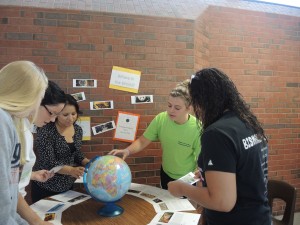Every Species Has a Purpose

Originally appears in the Fall 2014 issue
PLANT AND ANIMAL extinctions are happening at a rate 1,000 times greater than before humans walked the Earth, according to new research published in Science. The alarming report noted that the planet has been through five major extinctions before, and the author Ann Gibbons suggests that we are facing a sixth, unless the appropriate corrective actions are taken.[i]
Biodiversity and endangered species are two subjects I’m especially passionate about, and I know many others share this interest — a recent Gallup poll indicated that Americans consider biodiversity to be of greater concern than climate change — so I am adamant that elementary and high school students need to have a good understanding of our fragile ecosystem and how everyday actions can have a positive or negative impact on both a local and global scale. An essential element of that discussion is the protection of threatened and endangered plant and animal species and their habitats. When teaching about endangered species, I emphasize awareness, understanding, and empowerment. Students need a basic awareness that species have become endangered and/or extinct at an alarming rate. It is also essential that they understand how species become endangered and the consequences connected to the loss of species, and about the numerous efforts currently in place to prevent endangerment. Finally, I want to provide students with a sense of empowerment, the idea that I too can make a difference to prevent loss of species diversity.
Multi-Day Approach
When teaching about endangered species, it’s good to develop a multi-day approach. There is a lot of material to cover, and it will likely take more than one lesson to cover in depth. First you will want to introduce your students to endangered species. This will cover endangered species terminology and the specific reasons to study threatened and endangered species. Next, you provide an overview of the causes, the reasons that plant and animal species become threatened and endangered. In a review of local species, you will emphasize the importance of learning about and protecting species close to the students’ community. The Recovery Success Stories section focuses on how numerous species have successfully recovered; and What Can We Do? highlights the everyday actions for students to help protect endangered species and their habitats.
As I have expanded my approach to teaching about endangered species, I have added and modified various activities that help students apply the above topics. The end result is generally a five-day curriculum that depending on the available time can include various homework assignments, follow-up activities, handouts, and other support material.
To view the photo-rich magazine version, click here.
If you are not already a subscriber, please subscribe to read the full article
Dr. Wendy Brown is a Biology Science instructor at Danville Area Community College in Danville, Illinois. David Robinson is Education Director for the Endangered Species Coalition.
[i] Gibbons, Ann. “Are We in the Middle of a Sixth Mass Extinction?” Science/AAAS. N.p., 2 Mar. 2011. Web. 29 July 2014. <http://news.sciencemag.org/2011/03/are-we-middle-sixth-mass-extinction>.
Leave a Reply
You must be logged in to post a comment.





